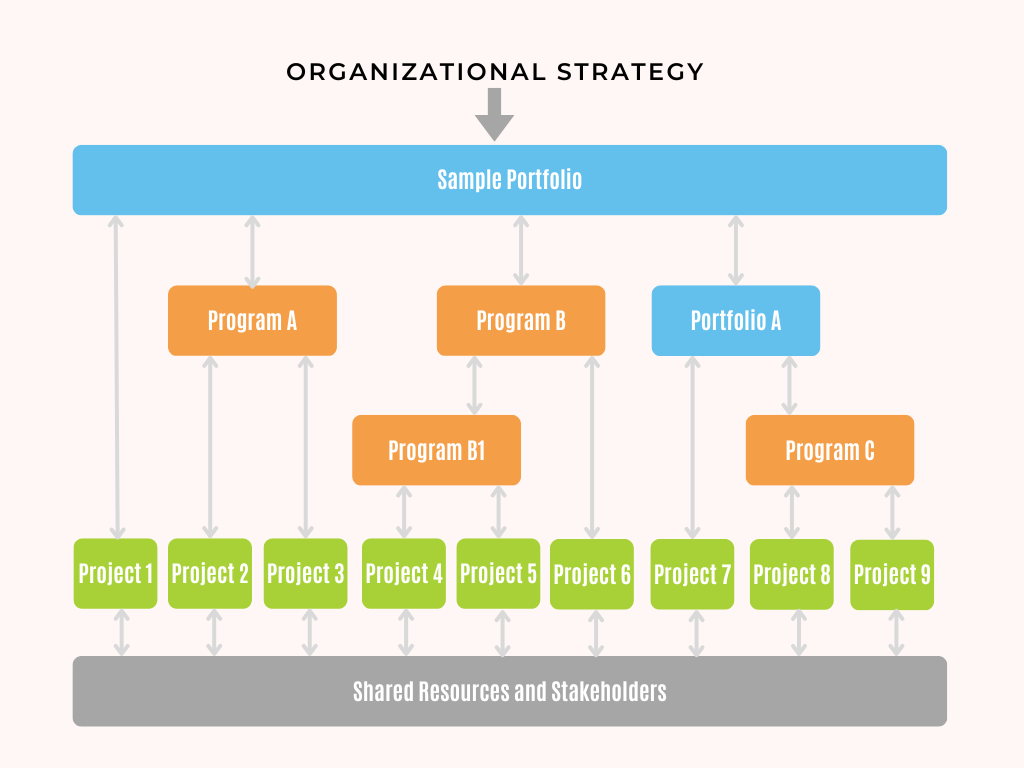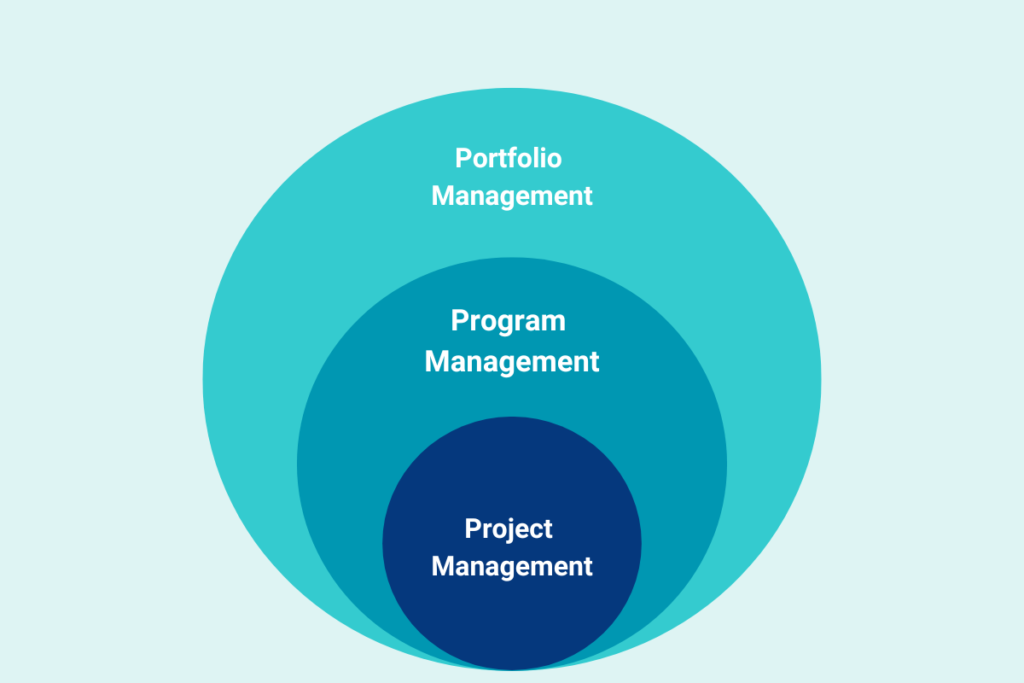Introduction
In the world of project management, there are three terms that are often used interchangeably: project, program, and portfolio. However, there is a subtle but important difference between these three terms.
In this blog post, we will explore the relationship between projects, programs, and portfolios. We will discuss the different characteristics of each type of initiative, and we will look at how they can be used together to achieve the strategic goals of an organization.
Definition of project, program, and portfolio
A project is a temporary endeavor undertaken to create a unique product, service, or result. A project may be managed in three separate scenarios: as a stand-alone project (outside of a portfolio or program), within a program, or within a portfolio.
A program is defined as a group of related projects, subsidiary programs, and program activities managed in a coordinated manner to obtain benefits not available from managing them individually. Programs are not large projects. A very large project may be referred to as a megaproject.
A portfolio is defined as projects, programs, subsidiary portfolios, and operations managed as a group to achieve strategic objectives.
Below image will illustrate of the relationship of project, program and portfolio in a sample organization.

Characteristics of project, program, and portfolio
From the definitions above, let’s dig deeper into the characteristics of project, program, and portfolio. The below table will list characteristics and provide us with an a overview of differences between projects, programs, and portfolios in the organization.
| Projects | Programs | Portfolios | |
| Definition | A project is a temporary endeavor undertaken to create a unique product, service, or result. | A program is a group of related projects, subsidiary programs, and program activities that are managed in a coordinated manner to obtain benefits not available from managing them individually. | A portfolio is a collection of projects, programs, subsidiary portfolios, and operations managed as a group to achieve strategic objectives. |
| Scope | Projects have defined objectives. Scope is progressively elaborated throughout the project life cycle. | Programs have a scope that encompasses the scopes of its program components. Programs produce benefits to an organization by ensuring that the outputs and outcomes of program components are delivered in a coordinated and complementary manner. | Portfolios have an organizational scope that changes with the strategic objectives of the organization. |
| Change | Project managers expect change and implement processes to keep change managed and controlled. | Programs are managed in a manner that accepts and adapts to change as necessary to optimize the delivery of benefits as the program’s components deliver outcomes and/or outputs. | Portfolio managers continuously monitor changes in the broader internal and external environments. |
| Planning | Project managers progressively elaborate high-level information into detailed plans throughout the project life cycle | Programs are manage using high-level plans that trach the interdependencies and progress of program components. Program plans are also used to guide planning at the component level. | Portfolio managers create and maintain necessary processes and communication relative to the aggregate portfolio |
| Management | Project managers manage the project team to meet the project objectives. | Programs are managed by program managers who ensure that program benefits are delivered as expected, by coordinating the activities of a program’s components. | Portfolio managers may manage or coordinate portfolio management staff, or program and project staff that may have reporting responsibilities into the aggregate portfolio. |
| Monitoring | Project managers monitor and control the work of producing the products, services, or results that the project was undertaken to produce. | Program managers monitor the progress of program components to ensure the overall goals, schedules, budget, and benefits of the program will be met. | Portfolio managers monitor strategic changes and aggregate resource allocation, performance results, and risk of the portfolio. |
| Success | Success is measured by product and project quality, timelines, budget compliance, and degree of customer satisfaction. | A program’s success is measured by the program’s ability to deliver its intended benefits to an organization, and by the program’s efficiency and effectiveness in delivering those benefits. | Success is measures in terms of the aggregate investment performance and benefit realization of the portfolio. |
Understanding the difference between projects, programs, and portfolios is important for several reasons. First, it helps to ensure that the right type of initiative is used for the task at hand. For example, if you need to create a new product, you would use a project. However, if you need to implement a major change across your organization, you would use a program.
Second, understanding the difference between projects, programs, and portfolios helps to ensure that they are managed effectively. Each type of initiative has its own unique set of challenges and requirements, and it is important to use the right management approach for each.
Finally, understanding the difference between projects, programs, and portfolios helps to ensure that they are aligned with the strategic goals of an organization. By ensuring that all of your initiatives are working towards the same objective, you can maximize your chances of success.
Conclusion
In this blog post, we have explored the relationship between projects, programs, and portfolios. We have discussed the different characteristics of each type of initiative, and we have looked at how they can be used together to achieve the strategic goals of an organization.
I hope this blog post has given you a better understanding of the relationship between these initiatives. If you have any questions, please feel free to leave a comment below.
Thank you for reading!

